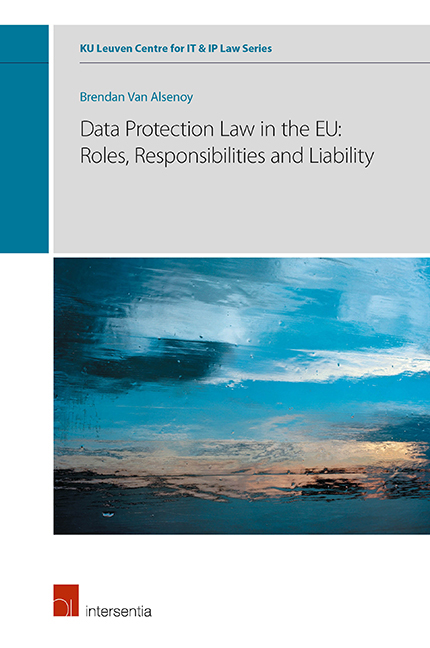Book contents
- Frontmatter
- Foreword
- Note to the Readers
- Acknowledgments
- Abstract
- Contents
- PART I INTRODUCTION
- PART II STATE OF THE ART
- PART III HISTORICAL-COMPARATIVE ANALYSIS
- Chapter 1 Introduction
- Chapter 2 The Emergence of Data Protection Law
- Chapter 3 National Data Protection Laws before 1980
- Chapter 4 International Instruments
- Chapter 5 National Data Protection Laws after 1981
- Chapter 6 irective 95/46/EC
- Chapter 7 General Data Protection Regulation
- Chapter 8 Conclusion
- PART IV USE CASES
- PART V RECOMMENDATIONS
- Bibliography
- Miscellaneous Endmatter
Chapter 7 - General Data Protection Regulation
from PART III - HISTORICAL-COMPARATIVE ANALYSIS
Published online by Cambridge University Press: 26 June 2019
- Frontmatter
- Foreword
- Note to the Readers
- Acknowledgments
- Abstract
- Contents
- PART I INTRODUCTION
- PART II STATE OF THE ART
- PART III HISTORICAL-COMPARATIVE ANALYSIS
- Chapter 1 Introduction
- Chapter 2 The Emergence of Data Protection Law
- Chapter 3 National Data Protection Laws before 1980
- Chapter 4 International Instruments
- Chapter 5 National Data Protection Laws after 1981
- Chapter 6 irective 95/46/EC
- Chapter 7 General Data Protection Regulation
- Chapter 8 Conclusion
- PART IV USE CASES
- PART V RECOMMENDATIONS
- Bibliography
- Miscellaneous Endmatter
Summary
ORIGIN AND DEVELOPMENT
588. REVIEW OF DIRECTIVE 95/46 – For almost 15 years, Directive 95/46 stood strong as the central instrument of data protection regulation in the EU. The European Commission assessed its implementation in 2003 and 2007, both times concluding there was no need for revisions. In 2010, however, the Commission announced that the time for revisions had come. The Commission argued that while the objectives and principles underlying Directive 95/46 remained sound, revisions were necessary in order to meet the challenges of technological developments and globalisation.
589. A CHANGING ENVIRONMENT – Formal preparations for the review began in July 2009, when the European Commission launched a public consultation “on the legal framework for the fundamental right to protection of personal data”. The consultation revealed concerns regarding the impact of new technologies on data protection, as well as a desire for a more comprehensive and coherent approach to data protection. Perhaps more significantly, 2009 was also the year when the Lisbon Treaty entered into force. Article 16 of the Lisbon Treaty provided the EU with a legal basis to enact comprehensive data protection legislation across Union policies (including in the area of police and judicial cooperation in criminal matters). It also gave the right to data protection renewed prominence: the right to data protection was recognized both by Article 16 of the Treaty and Article 8 of the EU Charter of Fundamental Rights, which became legally binding as the Lisbon Treaty entered into force.
590. PUSH FOR (EVEN) GREATER HARMONISATION – A new public consultation ensued following the EC Communication of 4 November 2010. The Commission concluded that many stakeholders supported the idea of further harmonisation of data protection rules at EU level. The Commission also felt that despite its aim, Directive 95/46 had failed to ensure an equivalent level of protection throughout the EU. Persistent fragmentation meant legal uncertainty, administrative burden and an uneven protection for individuals. A Regulation would provide a strong and uniform legislative framework at EU level.
- Type
- Chapter
- Information
- Publisher: IntersentiaPrint publication year: 2019
- 5
- Cited by



